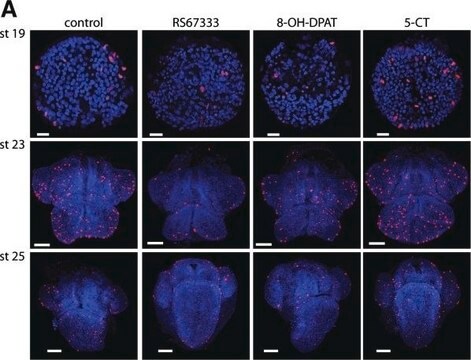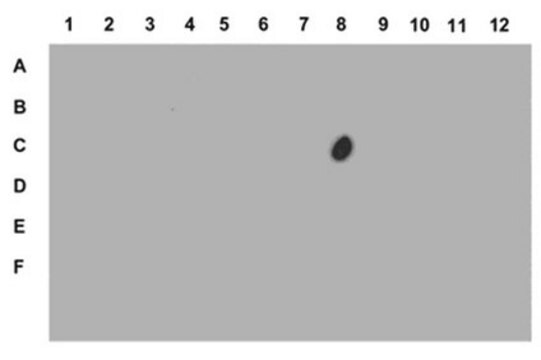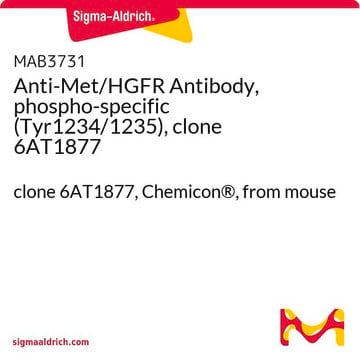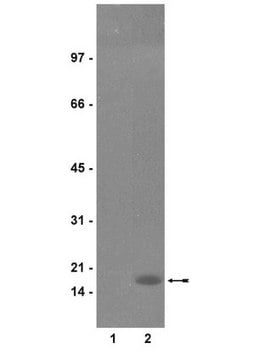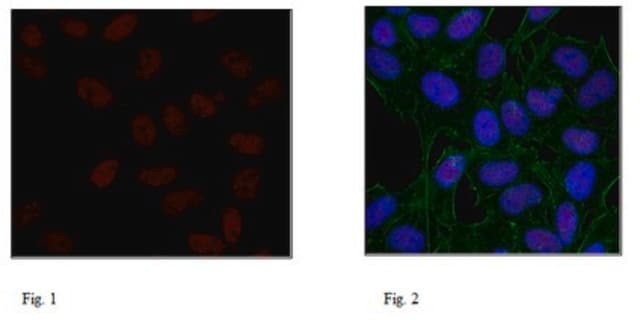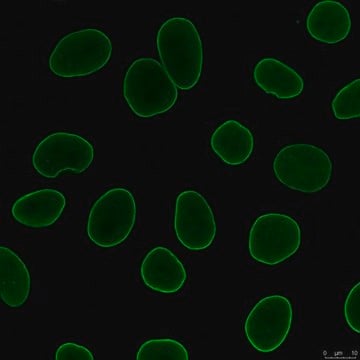MABE941
Anti-phospho Histone H3.1 (Ser28), clone 5D10D4 Antibody
clone 5D10D4, from rat
Synonim(y):
Histone H3.1, Histone H3/a, Histone H3/b, Histone H3/c, Histone H3/d, Histone H3/f, Histone H3/h, Histone H3/I, Histone H3/j, Histone H3/k, Histone H3/l
About This Item
Polecane produkty
pochodzenie biologiczne
rat
Poziom jakości
forma przeciwciała
purified immunoglobulin
rodzaj przeciwciała
primary antibodies
klon
5D10D4, monoclonal
reaktywność gatunkowa
human
metody
ChIP: suitable (ChIP-seq)
ELISA: suitable
dot blot: suitable
immunocytochemistry: suitable
western blot: suitable
izotyp
IgG2aκ
numer dostępu NCBI
numer dostępu UniProt
Warunki transportu
wet ice
docelowa modyfikacja potranslacyjna
phosphorylation (pSer28)
informacje o genach
human ... HIST1H3F(8968)
Opis ogólny
Immunogen
Zastosowanie
ChIP-seq: representative lot of this antibody was reported to be suitable for ChIP-seq. Personal communication Dr. T. Tachibana, Cell Engineering Corp. Osaka City, Japan.
Dot Blot Specificity Analysis: A representative lot of this antibody at a concentration of 0.5ug/mL was evaluated for cross reactivity with a panel of modified and unmodified peptides.
Immunocytochemistry: A representative lot of this antibody was reported to detect Histone H3.1 phosphorylated at serine 28 in Mitotic DM4 cells. See Yoshimi et al. (2013)
ELISA: A representative lot of this antibody was used in ELISA against a panel of phophorylated and unmodified peptides to demonstrate specificity. See Yoshimi et al. (2013).
Epigenetics & Nuclear Function
Histones
Jakość
Western Blotting Analysis: A 1 µg/mL dilution of this antibody detected phospho Histone H3.1 (Ser28) in a nocodozole treated HeLa cell lysate.
Opis wartości docelowych
Powiązanie
Postać fizyczna
Przechowywanie i stabilność
Inne uwagi
Oświadczenie o zrzeczeniu się odpowiedzialności
Nie możesz znaleźć właściwego produktu?
Wypróbuj nasz Narzędzie selektora produktów.
Kod klasy składowania
12 - Non Combustible Liquids
Klasa zagrożenia wodnego (WGK)
WGK 1
Temperatura zapłonu (°F)
Not applicable
Temperatura zapłonu (°C)
Not applicable
Certyfikaty analizy (CoA)
Poszukaj Certyfikaty analizy (CoA), wpisując numer partii/serii produktów. Numery serii i partii można znaleźć na etykiecie produktu po słowach „seria” lub „partia”.
Masz już ten produkt?
Dokumenty związane z niedawno zakupionymi produktami zostały zamieszczone w Bibliotece dokumentów.
Nasz zespół naukowców ma doświadczenie we wszystkich obszarach badań, w tym w naukach przyrodniczych, materiałoznawstwie, syntezie chemicznej, chromatografii, analityce i wielu innych dziedzinach.
Skontaktuj się z zespołem ds. pomocy technicznej